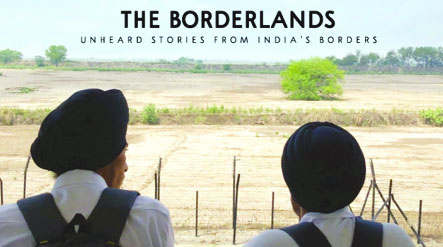Growing up while interacting with borderland citizens, documentary maker Samarth Mahajan narrates how he aims to take the concept of boundaries much beyond Indo-Pak
What do pilgrims in Punjab’s Dera Baba Nanak feel when faith travels across the border to Gurdwara Kartarpur Sahib in Pakistan through binoculars or a telescope? At a time, when borders have mental images as frontiers of cross-fire, illegal crossings and violence, a documentary filmmaker intends to humanise them and create conversations on cross-border relationships.
Director Samarth Mahajan, 27, comes from Dinanagar, a small town situated 10 miles from the India-Pakistan border. Interactions with borderland citizens was a way of life in his growing-up years.
After his National Award-winning non-feature film The Unreserved, which was an inquiry into the lives of passengers who use the unreserved compartment in trains, the idea of The Borderlands struck him.
“During The Unreserved, we met a young Kashmiri guy who told us how he supported Pakistan while his brother, being an army man, supported India. The conversation ended with him telling us that if he got a job in India, he would start supporting India too.
“It taught us something about the fluidity that a borderland citizen might experience due to the ‘other’ country being an immediate reality,” said Mahajan. This piqued his interest, resulting in researching stories from border areas. “We found such counter-intuitive narratives that we had to start making the film. In the current context, when borders are being used as a divisive tool and depicted as hubs of violence, we intend to humanise them and create conversations on cross-border relationships,” he added.
The intent of the film’s team — camera and shorts — is to explore all of India’s borders.
“Our journey is divided over three phases, Kutch to Punjab, then Kashmir to Arunachal Pradesh, and then our borders with Myanmar, Bangladesh and Sri Lanka. We feel a film will be representative of the title The Borderlands, only when we move beyond the set image of borders being the Indo-Pak border or the LoC in Kashmir,” he said.
For example, he said, they are looking at how families cope when, in Diu and Kutch, fishermen looking for a better catch often drift into Pakistan’s waters and are consequently jailed. Or how, in Jaisalmer and Barmer, grooms from a Pakistani Hindu community visit border towns in Rajasthan in search of brides. Can such alliances break stereotypes?
The research for the project involves a mix of visits to border towns in Punjab, Rajasthan and Gujarat, talking to locals, watching previous visual works on India’s borderlands, reading travel books and ethnographic accounts of researchers.
Mahajan, who has taken the crowdfunding route through ‘Wishberry’ for the movie, feels it could be image-changing for people who have grown up in the mainlands to know about life in the borders.
“As mainland citizens, it is quite easy for us to say that we want to wage war with another country, without having any idea of the effects on the lives of people there. We are hardly taught to comprehend what it means to belong to a nation. Borderland narratives can shed a new understanding of fluidity in identities and movement across borders,” said Mahajan.
When the film takes complete shape — by April 2020 — Mahajan hopes for a theatrical release for The Borderlands in tier-I and tier-II cities. They are in talks with a few digital platforms. “Our bare minimum budget for the film is `25 lakh, yet to do it at the scale which the idea deserves, we need funds to the tune of `1 crore. The crowdfunding campaign has inspired us by proving that people trust our idea and ability.” But has the market for documentaries opened up in India?“The market is improving with the springing up of digital platforms like Netflix and Amazon which have dedicated sections for non-fiction films. There is still a gap between traditional distributors and non-fiction filmmakers. The distribution networks for documentary films remain fragmented and non-fiction filmmakers continue to shy away from taking professional routes of distributing their films due to fears about return on investment of time and energy. “There is a dearth of development funds, which is a major reason why we decided to crowdfund,” Mahajan said.


























